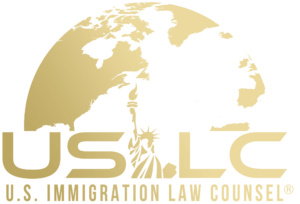If you want to sponsor your mother for a green card, you will need to understand how this process works and the different types of documentation that are required. You also need to know what happens after submitting form I-130 so that you follow the correct steps to make your mom a permanent resident. Although this is a relatively straightforward process, there are some common pitfalls that you will want to avoid. Here is everything you need to know about acting as your mother‘s sponsor so that she can get a green card.
Can I Sponsor My Mother?
If you are a U.S. resident or a green card holder, you may be wondering if there is a way to make your mom a permanent resident. The good news is that a green card holder can sponsor their mother by filling out form I-130, which is the official Petition for Alien Relative. This petition establishes a relationship between the sponsor and the immigrant so that they can obtain a green card.
The most important thing to understand about form I-130 is that it is not a one step process that grants your mother immigration benefits to the United States. This is just the beginning of the process, so you need to know what happens after submitting form I-130 to ensure approval and immigration success.
The primary purpose of this form is to prove that the immigrant is eligible to immigrate to the United States through a green card due to a familial relationship. This also establishes that you will be financially supporting them if they are approved for a green card so that they do not become a strain on the United States government.
Document Requirements
To guarantee that your I-130 petition is approved, you have to include the necessary documents to prove that there is a family relationship. Here are the types of documents you need to include before moving on to the next steps after I-130 approval:
- Proof that you are a U.S. citizen or a green card holder.
- Proof that the relationship is legally valid.
- Proof of the nationality of the person applying for a green card.
- Proof that the relationship is legitimate and not fraudulent.
- Proof of any name changes for the sponsor or immigrant, if applicable.
Examples of the most essential pieces of documentation you will need to include are things like your birth certificate, passport, naturalization documents, and copies of your green card. The specific types of documentation you need will vary depending on your individual circumstances and the parent you are sponsoring. For instance, for adoptive relationships, you will need to provide proof that you were adopted before you turned 16 years old.
To ensure that you have provided all the necessary documentation for the USCIS, you need to take the additional step of hiring an immigration attorney. An immigration lawyer will help you find the specific documentation suitable for your situation so that you do not run into any common issues, such as needing to provide additional evidence to have your petition approved.
Something else to keep in mind is that the USCIS does allow for alternative documents if necessary documents are not available to you. This is called secondary evidence and is helpful in situations where you may not have access to specific documentation, or it may not exist. An example of this is if you do not have a birth certificate you provide other records, such as a baptismal certificate or school records.
What Happens After Submitting I-130?
What happens after submitting I-130 depends on the category you fall into that the USCIS has in place. If you are sponsoring your mother, this will put you in the immediate relative category, which provides a simpler process.
The first thing you need to do after the I-130 is approved is to start the adjustment of status process. This is the process of turning a non-immigrant status into a permanent resident status or green card holder by filing form I-485. To qualify for this, your mother needs to be physically present in the U.S., have an immigrant visa available, and have lawful entry to the U.S.
Applying for adjustment of status also includes filling out an affidavit of support and providing a medical examination and vaccination records.
If your mother is outside of the U.S., you will need to fill out form DS-261 to get an agent, as well as pay the fees for the immigrant visa application and the affidavit of support. You will then need to submit the immigration visa application along with civil records and supporting documents for the affidavit of support.
Processing Time For I-130
How long it takes to make your mom a permanent resident through an I-130 petition is dependent on several different factors. The primary factors that will impact the processing time include where your mother is applying from and how many petitions to USCIS is currently processing.
If your mother is living abroad, the average processing time is between 11 and 15 months. If she is living within the U.S., the processing time is between 10 and 23 months.
Unfortunately, there is no proven way of speeding up the processing time for an I-130 petition. The best way to ensure the process goes quickly and smoothly is to ensure that your petition is error-free. Many petitioners fall into common pitfalls that can slow down their application, such as not providing the correct documentation or information or not providing enough documentation to establish a familial relationship.
An immigration attorney can help you ensure your petition is error free and thorough to avoid running into these issues. They can also help you track your petitions progress and instruct you on what to do after the petition has been approved.
Hire an Immigration Attorney Today
Are you ready to start your I-130 petition for your mother? Contact us today at U.S. Immigration Law Counsel at 800-666-4996 to speak with an immigration attorney about your situation. We will deal with the government, so you don’t have to!




